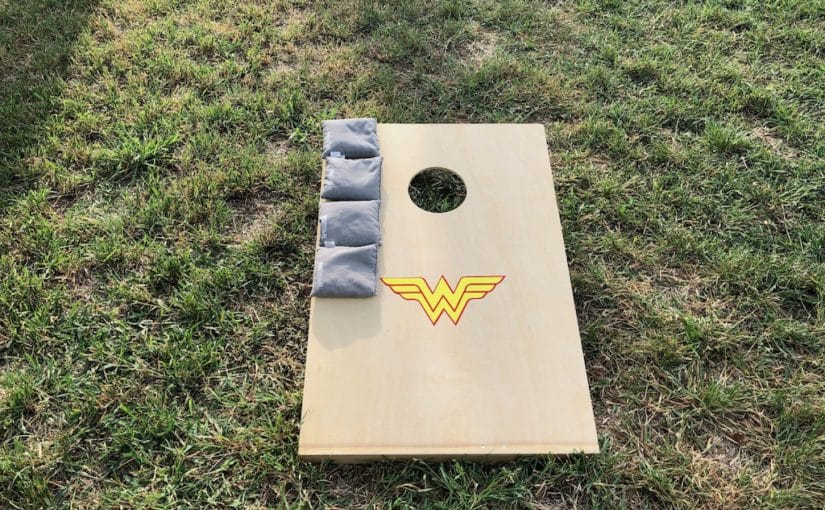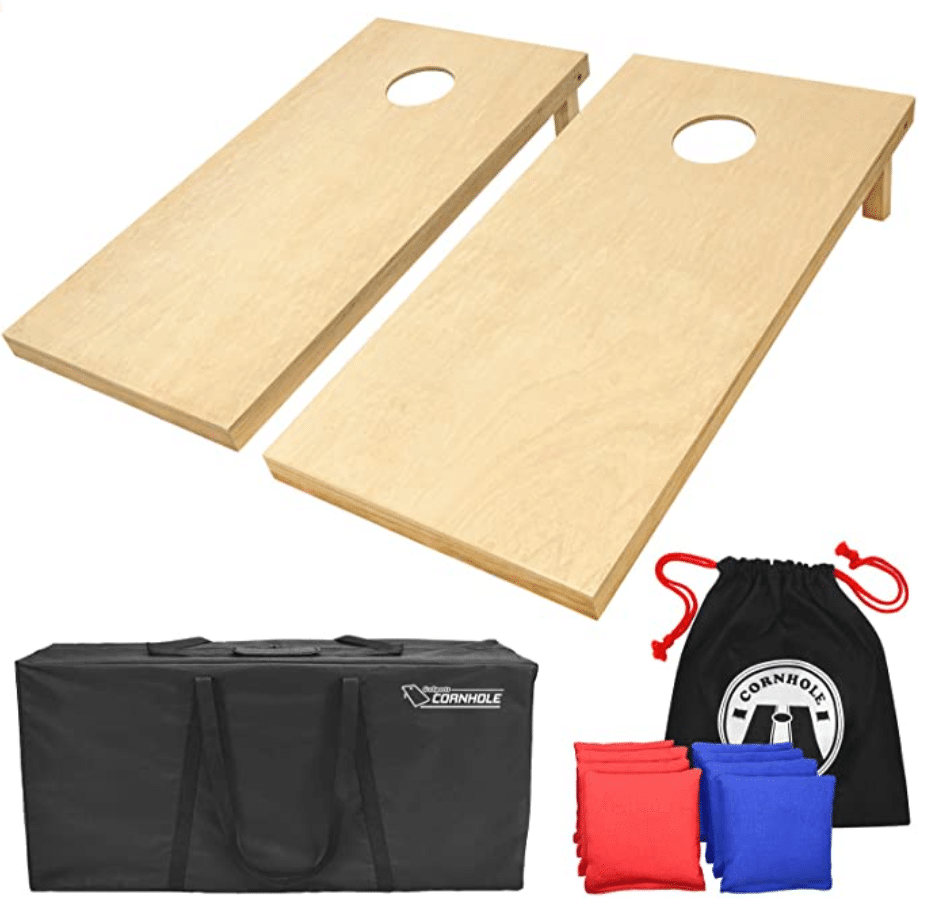Cornhole scoring is pretty simple business. But there are a few situations you should be aware of that might arise during your game and cause some confusion (especially when the brewhahas start to kick in). Here’s a quick overview on cornhole scoring and explanations about how to keep score when some unique situations arise.
Get a quality cornhole board set right now!
Check out my #1 recommendation for a quality cornhole board set that is perfect for beginners.
Set up the cornhole court
Just in case you don’t know how cornhole works, you need to be able to set up a cornhole court before beginning your game.
The official cornhole court is 8 feet by 45 feet but if you’re just playing in the back year you don’t need that much real estate.
The boards should be 27 feet apart from each other when measured from edge to edge. If you don’t have much room or you’re struggling to get it done at that distance, many people play with the boards 24 feet apart from each other.
And finally, juniors (or kids) usually stand 21 feet from the edge of the board that they are tossing their bags at.
- You can read more about setting up cornhole courts here.
- Also, you can find out more about regulation-sized cornhole bags here.
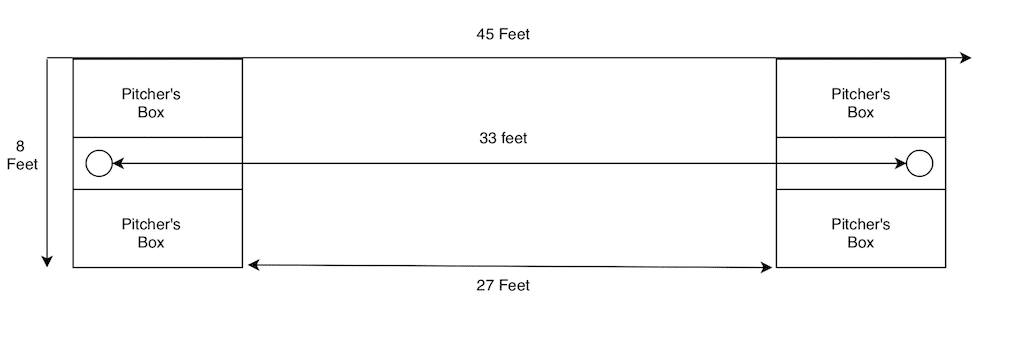
How does cornhole scoring work?
There are three different types of outcomes you can have when throwing your bags: cornholes, woodies, and fouls.
- Cornholes are worth 3 points and you score a cornhole whenever your bean bag makes it through the hole in the cornhole board.
- Woodies are worth 1 point and are those bags that remain set on the cornhole board (also called playing surface).
- Foul bags are worth zero points and are those bags that aren’t cornholes and aren’t woodies.
Foul bags are a little interesting because they can come in many different forms and I’ll talk about them below.
Note that some people draw a line on the cornhole board so that woodies can count as either one or two points depending on which side of the line they land on. This is not the official way to keep score but can make things a little interesting if you want.
What counts as a foul bag?
According, to the ACO, foul bags occur when:
- You step over the foul line (at least one foot or appendage must be completely inside the pitcher’s box at the time of release)
- Throw from the wrong pitcher’s box (many don’t follow this rule)
- A bag hits the ground — if a bag hits the ground and then makes its way on to the cornhole board, it’s a foul
- Lands on the ground — any bag that comes to rest touching the ground and the board is a foul.
- Hits something else besides the board — if your bag hits a tree, power line, ceiling, etc. then that it s a foul bag.
- Take too long to pitch — Any bag not pitched within the 15 second time limit is a foul bag.
A lot of people don’t know about the 15 second time limit that you have to pitch. I doubt most will be playing with a shot clock, but technically those shots that take longer than 15 seconds should be fouls!
Also, in Singles play, once the final bag comes to a rest, each player has 30 seconds to walk to the other end, pick up their bags, and get ready to make their pitches.
Again, these time limits are rarely enforced in casual play because who want to sit there and count those out. But if you want to play competitively, you absolutely need to keep those time limits in mind.

Cancellation method
So now you know how much each type of outcome is worth but how do you add up the scores in cornhole?
The most official way that cornhole scoring works to determine the winner is the “cancellation method.”
With this method, only one player or team walks away with points at the end of each frame (or inning as some call it) because the points cancel each other out.
So for example, let’s say a frame goes like this:
- TEAM A scores 2 cornholes and 1 woody so they get 7 points.
- TEAM B scores 3 cornholes and 2 woodies so they get 11 points.
In that case, you subtract the lower score from the higher score so that at the end of the frame, TEAM B has 4 points (11 minus 7) and TEAM A has 0 points.
If you find that that cornhole scoring method takes too long then you can simply just count all of the points without cancelling them out.
On the other hand, if you want to extend the game out, you can give -1 points for fouls. But keep in mind that if the players are not very skilled, scoring like this can make a game go on for a long time!
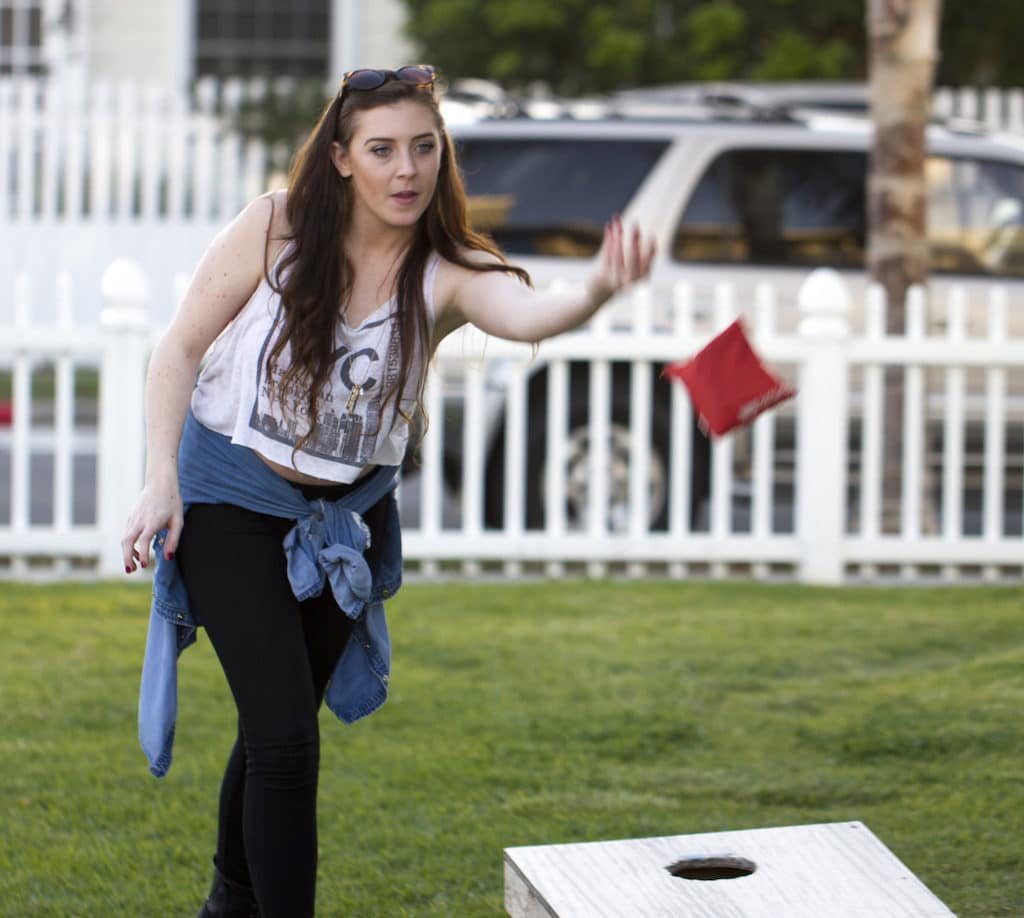
Cornhole scoring winner
So that’s how you keep score in cornhole but how do you figure out the winner? Well, there are a few ways that you can determine the winner.
Play to 21+
The traditional cornhole game goes until the first player or team reaches (or exceeds) 21 points at the conclusion of a frame is the winner. (Some play to 11 to shorten the games.)
There are other ways to do cornhole scoring, though.
Play to exactly 21
Some play so that you have to hit exactly 21 points on the concluding frame or else you go back to 15 or 13 (just like the basketball game 21).
Win by 2
Some play so that hitting 21 isn’t good enough. Instead you have to get your lead up by at least two points and be over 21 points to win. You can combine this with the rule that you have to hit exactly 21 to make things even more interesting at the end.
Drinking games
If you want to make things extra interesting, consider adding some fun cornhole drinking games into the mix! You can read about some of those games here.
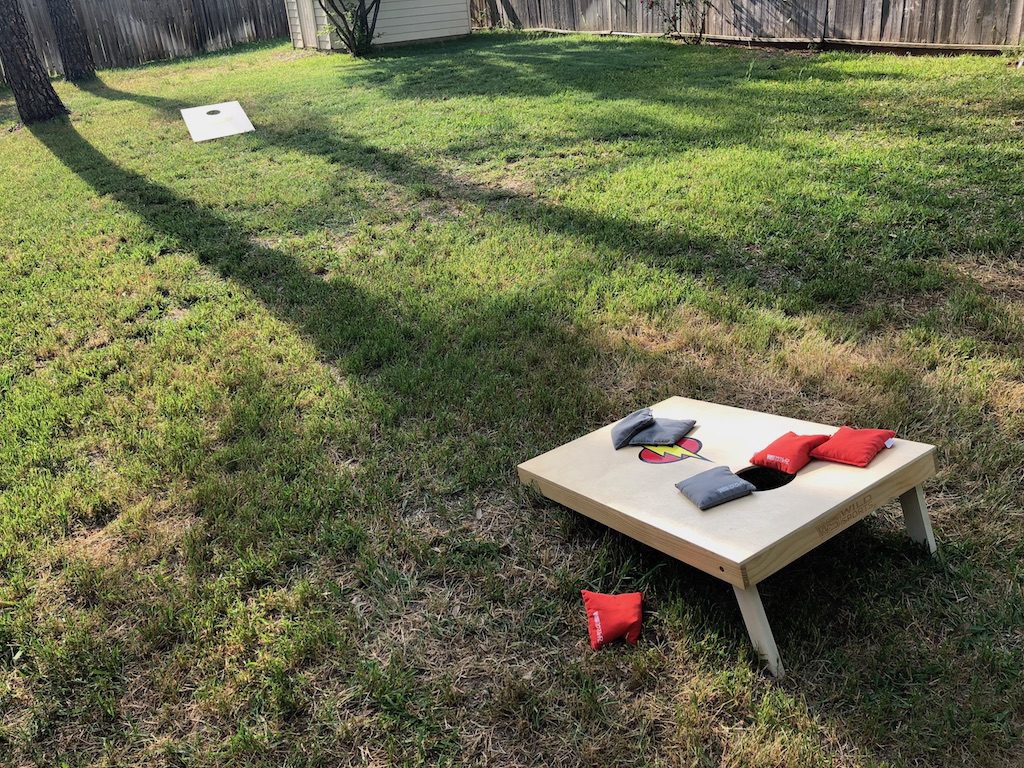
Who goes first?
When playing backyard style, you can simply flip a coin to see who goes first. But after that, it’s the player or team who scored in the preceding frame that pitches first in the next frame.
If neither player or team scores, the player/team who pitched first in the preceding frame shall retain first pitch in the next frame.
Get a quality cornhole board set right now!
Check out my #1 recommendation for a quality cornhole board set that is perfect for beginners.
What if a foul bag hits the other bags?
If someone pitches a foul bag and it affects any bags in play, their opponent can choose to return all cornhole bags to their original position on the playing surface or leave all bags as they are.
So for example, let’s say Team A throws a bag that hits the ground and then deflects onto the cornhole board and knocks the other team’s bag off the board. The player from Team B can grab the bag that was knocked off and place it back on the cornhole board.
What if I drop my bean bag?
Cornhole uses a rule just like the NFL uses for quarterbacks to determine if a pass was incomplete or if it was a fumble.
If you’ve already completed the final forward swing of the delivery process and the cornhole bag leaves your hand, then that is a pitched bag — if it lands on the ground that is a foul worth zero points.
However, if the bag is is accidentally dropped by a player before the final forward swing has started, that bag and may be picked up and pitched.
What if I throw out of turn?
If someone throws their bag when it’s not their turn then it’s considered a foul. If the out-of-turn bag affects any bags in play, once again the opponent has the option to return all of the nags to their original positions or simply leave them be.
However, if the out of turn player has already thrown two bags before anybody realizes the mistake, then the frame proceeds and those bags are not considered fouls.
Who keeps the cornhole scoring?
In a typical backyard game, the players just keep the score themselves. Obviously, this can get a little difficult when there’s a lot of festivities around so you can look into purchasing different items to help you keep score.
For example they have these suite magnetic score keepers.
And now you can even download an app to help you keep score.
If someone is feeling really generous, you can get a third party to keep up with the score but you gotta make sure that they know what they’re doing since it’s up to the players to make sure their scores are kept properly.
Final word on cornhole scoring
Cornhole scoring is straightforward which is a good thing since complicated scoring schemes are the last thing you need when out having fun. You can probably throw out a lot of these time limit rules when playing but it’s a good idea to have a firm grasp on the scoring system and a reliable method for keeping track of the score.

